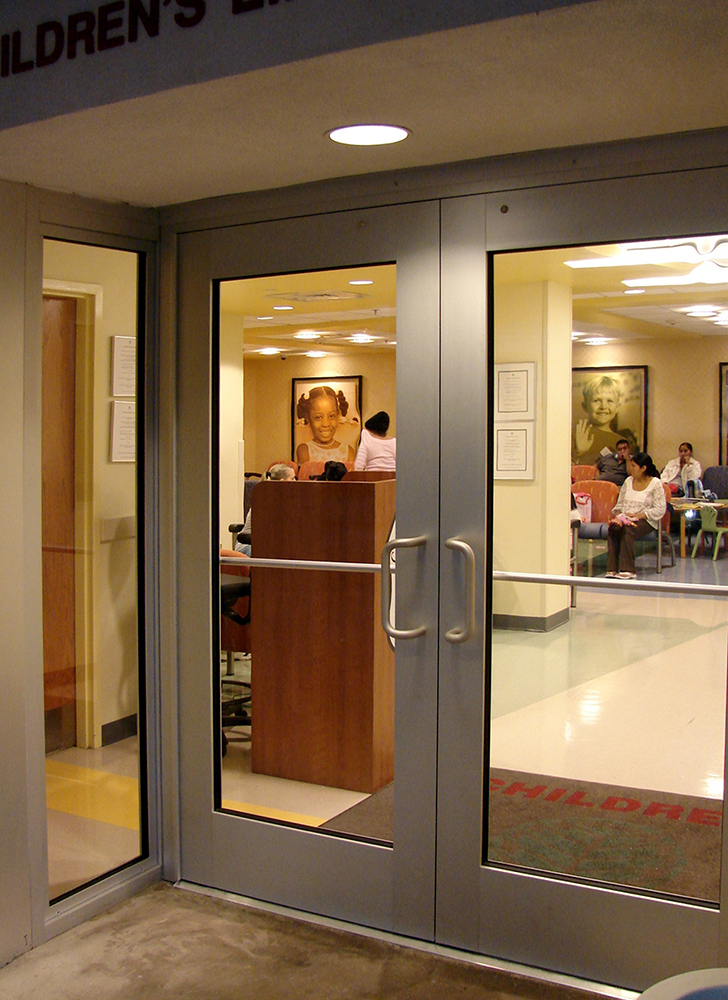Healthcare projects pose a unique, interlocking set of challenges for architects. Some the challenges include complex HVAC requirements, strict regulations and ongoing operational cost containment. These challenges are compounded by limited access to capital—which often falls short when it comes to executing the best engineering solutions.
And that’s just the physical systems; the programmatic requirements and realities of daily healthcare operations add a whole new layer of complexity, especially when it comes to life safety.
The Dangers of Being a Healthcare Worker
According to the Occupational Safety and Health Administration (OSHA), hospitals are among the most hazardous places to work in the United States. In a given year, healthcare facilities see more on-the-job injuries than construction or manufacturing facilities, with almost twice the injury rate of all other private industry combined.
A startling percentage of these injuries are the result of violent assaults on healthcare workers. According to OSHA’s 2015 Guidelines for Preventing Workplace Violence for Healthcare Workers, “Healthcare and social service workers face a significant risk of job-related violence.”
Ten percent of all U.S. workplace injuries are the result of violent assaults suffered by healthcare workers. According to the International Council of Nurses, healthcare workers are more frequently physically assaulted at work than police or prison guards. In 2013, more than 25% of all on-the-job fatalities in healthcare facilities were the result of violence, and by 2015, roughly 75% of all workplace assault injuries in the US were suffered by healthcare workers.
Hospitals Struggle with Complex Security Issues
As experts like Geoff Kohl–editorial director for Cygnus Security Media and Secured Cities conference director—have often pointed out, hospitals pose uniquely challenging security problems:
“The challenge, as we know, is that hospitals have a lot of mission-critical electronic (and chemical) systems plus a lot of people and are generally a very dense environment. They’re simply not the best places to shoot weapons to take down an active shooter.”
In fact, large hospitals are the only workplaces where OSHA guidelines currently specifically recommend bullet-resistant barriers. Since 2003, the National Institute for Occupational Safety and Health (NIOSH) has recommended that hospitals install deep service counters and bullet-resistant/shatterproof enclosures in reception areas, some triage areas, and nurses’ stations.
“We definitely see an increasing need for bullet resistant windows in emergency room areas and receptions areas,” explained Total Security Solutions founder and CEO Jim Richards. “Typically, these are larger hospitals or in the larger cities; they bring in people from all walks of life, off the street, to one area. These are people in very stressful situations, and it’s easy for tempers to flare. If two guys get in a dispute and start shooting and both get injured, they’ll both end up in the same ER together. That’s a recipe for disaster.”
Bullet Proof Barrier Design for Hospitals
Jim and his team have years of experience designing, engineering, fabricating, and installing bullet-resistant barrier system solutions for healthcare facilities and hospital campuses:
“These are stressful jobs. We appreciate that, and we know for a fact that clean, well-designed barrier systems drastically reduce violent altercations in the workplace. Just the presence of these systems is a powerful deterrent. But more importantly, we can design these systems so that they don’t get in the way of healthcare workers getting the job done. A good barrier system keeps aggressive people from acting out without making average law-abiding citizens feel that they’re being treated like criminals.”
NEXT STEPS:
- Sign up for our newsletter to stay up-to-date with the latest industry news
- Follow us on Twitter, Facebook or LinkedIn
- Download our Ultimate Guide to Bulletproof Glass and Bullet Resistant Barriers infographic


